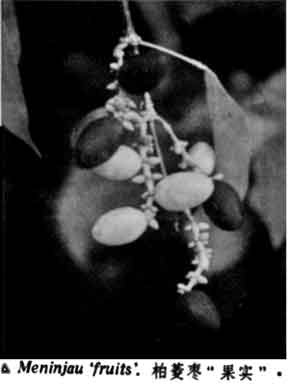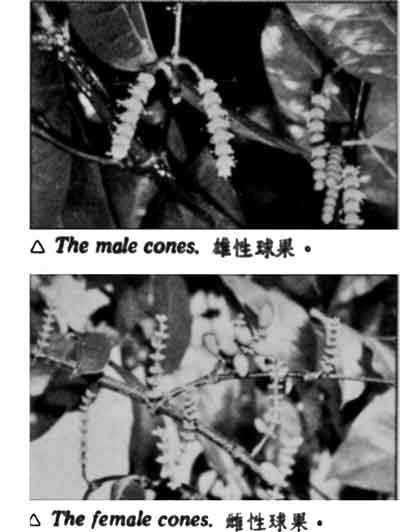
MENINJAU - AMAZING RARE FRUIT
SCIENTIFIC NAME: Gnetum gnemon
FAMILY: Gnetaceae
 In line with the nation-wide fruit tree planting campaign, the Agriculture Division of the Primary Production Department has been actively engaged in the collection of better varieties of commonly-cultivated fruit tree species and the introduction of a wide range of other fruit tree species, including the less common species which are considered 'rare'.
In line with the nation-wide fruit tree planting campaign, the Agriculture Division of the Primary Production Department has been actively engaged in the collection of better varieties of commonly-cultivated fruit tree species and the introduction of a wide range of other fruit tree species, including the less common species which are considered 'rare'.
'Rare' because they are seldom seen in the market or grown locally, or the majority of the population simply do not know these trees and are not aware that their fruits can be eaten in more than one way. One such species is Meninjau.
Meninjau or Belinjau (Gnetum gnemon) belongs to the family Gnetaceae. It is native to this part of the world, particularly Java, Indonesia. In peninsular Malaysia it is mainly found in the East Coast. It is a tall, narrow, evergreen reaching to a height of 17 to 20 metres, with a nice conical canopy. It can be grown from seeds or propagated by marcotting.
Meninjau is considered to be a primitive plant. Although its leaves bear resemblance to the other tropical fruit trees, its structures are similar to those of the conifers (pines). Consequently, the Meninjau tree has sometimes been regarded as a botanical oddity.
The leaves are flat, arranged in opposite pairs, and are simple with entire but wavy margins. They are dark green, hairless and shiny above, but are very pale below. The main vein is chrome-yellow in colour and sunken above, but strongly raised below.

Meninjau, being a primitive tree, does not produce flowers. Instead male and female cones are borne on trees. The male cones are 7 cm long, each one having several small bract-like structures in which are tiny male appendages. The female cones are up to 12 cm long, each one having several little pointed ovules in stalkless bunches. Some of these develop into seeds.
The female cones of Meninjau plant do not actually produce true fruits. The fruits are actually seeds in the botanical sense. These seeds are oblong in shape and smooth in texture, measuring 2.5 to 4 an long and 2 an wide. When young, it is green in colour and tender, but turns to orange red and fibrous when ripe.
The edible part of the seed is the skin or rind which is bulky. The seeds can be eaten raw or made into 'keropok', biscuits, cakes and savouries. A popular recipe for Meninjau in Indonesia is a soup prepared with such an amazing number of ingredients that it may not be wrong to call it a 'rojak' soup. Nevertheless, it is colourful, cheap, easy to make, and above all, a very appetizing dish. (See recipe on Recipe Page).
DATE: September 1986
* * * * * * * * * * * * *
